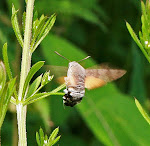August 22, 2013:
In
north-west England, the Oak Bush-cricket has been recorded from very few
localities although southwards of the Bristol Channel to The Wash, it is
distinctly common. Without a doubt it is only thinly scattered here in the
north but its nocturnal life-style, its inability to stridulate and therefore
not to be picked up on an electronic detector, and its elusive habit of spending the day-time
hidden on the underside of oak and other leaves, all contribute to its apparent scarcity.
After several searches during the summer, I was pleased to finally locate a mature male near to Red Scar Woods on the north bank of the Ribble by shaking the lower branches of a mature oak over a net.
The
first official record for the Ribble woods was in August 1981 followed by sightings
at two other spots in August 1985. Since then, none have apparently been
submitted to the official authorities although rumours of later sightings exist.
The place where I found it was at least a half-mile from the nearest known
record and it’s very likely that it’s quite widespread in this large area of
woodland.
After being examined it was released back onto the same oak tree from where I found it.
.jpg)




.jpg)











